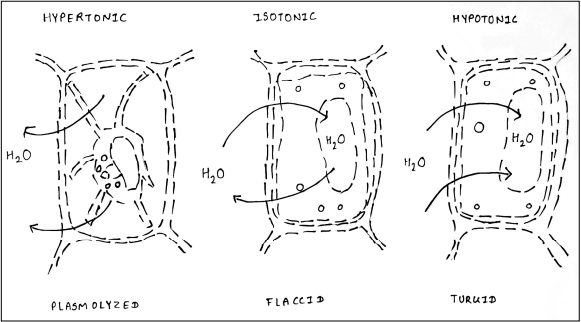Culture media is a nutrient rich liquid or gel the supports the growth of microorganisms. Microorganisms are omnipresent and grow in variety of habitat and needs varying nutrients. Therefore, we cannot expect or grow different microorganisms in the same media. Based on the requirements of microorganisms, the composition and concentration of nutrients varies. And hence, the nutrient media has been classified into different types.
The major purpose of culturing microbes in the laboratory is to isolate and study the microorganisms. In laboratory, we isolated the pure culture from the mixed population and explore their ability to produce bio-products and resolve environmental challenges. Culturing microbes is also an essential step in diagnostic laboratory for diagnosis of diseases, study pathogenicity, and development of vaccines.
This article will discuss the classification of culture media based on its composition and applications.
Classification of media based on its consistency (or state) –
- Solid Media – The solid media is prepared by using solidifying agent like agar. In solid media, the agar concentration is in the range of 1.5 to 2%. The solid media provides the surface for microbial growth. The microbes grow on the surface in the form of colonies.
- Semi Solid Media – This media is also prepared by adding solidifying agent with lesser concentration. The agar is usually added around 0.5%. The semi solid media has intermediate consistency. Such media are mostly used for culturing microaerophilic microbes and to study bacterial motility
- Liquid Media – The liquid media is also called broth culture. No solidifying agent is added in this. The purpose of liquid media to culture the microbes in the form of suspension and to conduct various biochemical tests. In fermentation industry, broth culture are mostly used for the production of bio-products.
Classification of culture media based on the basis of composition –
- Defined or Synthetic media – It is the media which is prepared by known ingredients with predefined concentration. These ingredients are either purified from naturally sources or chemically synthesised in the laboratory.
- Undefined or Non Synthetic Media – The undefined media are those whose composition is unknown. These media are usually obtained from natural resources. Undefined media may be the combination of known and unknown ingredients. For example, nutrient media with yeast or beef extract or enzyme or protein isolates, where we are unaware about its chemical composition and concentration.
Classification of Culture media based on its purpose or applications
- Basic Media – This is very simple media containing basal nutrients that provide carbon, phosphorous, nitrogen, sulphur, and hydrogen. This media is used for the microbes which do not need any special nutrients for their growth. Nutrient broth, nutrient agar and peptone water is considered as basic media. In laboratory, when any unknown microbe is isolated for the first time, it is first usually attempted to culture it on basal media.
- Enriched Media – As the name suggest, this media is contains additional nutrients like serum, blood, and yolk etc. There additionally added nutrients provide vitamins and all essential amino acids supporting growth of fastidious microbes.
- Selective Media – This media supports the growth of selective microbes and inhibiting the growth of unwanted microbes. The selective media may contains antibiotics, chemicals, or have altered pH or combination of these that supports growth of desired bacteria.
- Enrichment Media – This media is also very selective in promoting growth of desired microbes. The enrichment media may also contain antibiotics, dyes, chemicals or have altered pH or combination of all. Hence, it is similar to selective media. The only difference is their physical state. The enrichment media are in liquid state (No agar) and selective media are in solid state (contains agar). Enrichment media are preferably used prior of using selective media.
- Differential Media – This media allows us to differentiate the colony of two different bacterial species. This is possible because of the different colony colour. The differential media contains special dyes or substrate allowing bacteria to producing different colony colour. This media serves best while studying the morphological study of the bacterial colony and their differentiation.
- Transport Media – As the name suggest, this media is used while transporting the bacterial specimen from one geographical region to another. This media contains special ingredients like glycol or PEG that prevents media and specimen dryness. This media also prevents the overgrowth of microbes. During transport, if microbes show overgrowth then it may lead to exhaustion of nutrients and accumulation waste causing microbial death. Hence, transport media serves its purpose.
- Anaerobic Media – This media is exclusively used for culturing anaerobic bacteria. The media contains reducing agent like cysteine or thioglycollate. The reducing agents agents utilize the oxygen present in the media promoting the growth of anaerobic bacteria.
- Storage media – This media is used when bacterial specimen needs to be stored for longer duration. The microbial culture are stored in refrigeration hence the storage media contains glycerol that prevents the crystallisation of water inside the bacterial cell.
- Assay Media – This media is exclusively used for conducting different bacterial assay like antibiotic testing.
List of most common Culture Media used in Microbiology and Biotechnology Laboratory –



References –
https://microbiologie-clinique.com/list-of-bacteriological-culture-media.html
https://pharmastate.academy/different-types-of-media-used-in-microbiology-lab/
Dr. Sangha Bijekar has 9 years of Teaching Experience at University level. She loves to get engage in teaching and learning process. She is into blogging from last two years. She intends to provide student friendly reading material. She is avid Dog Lover and animal rescuer. She is learned Bharatnatyam and Katthak Dancer. She is into biking and She also loves to cook.


